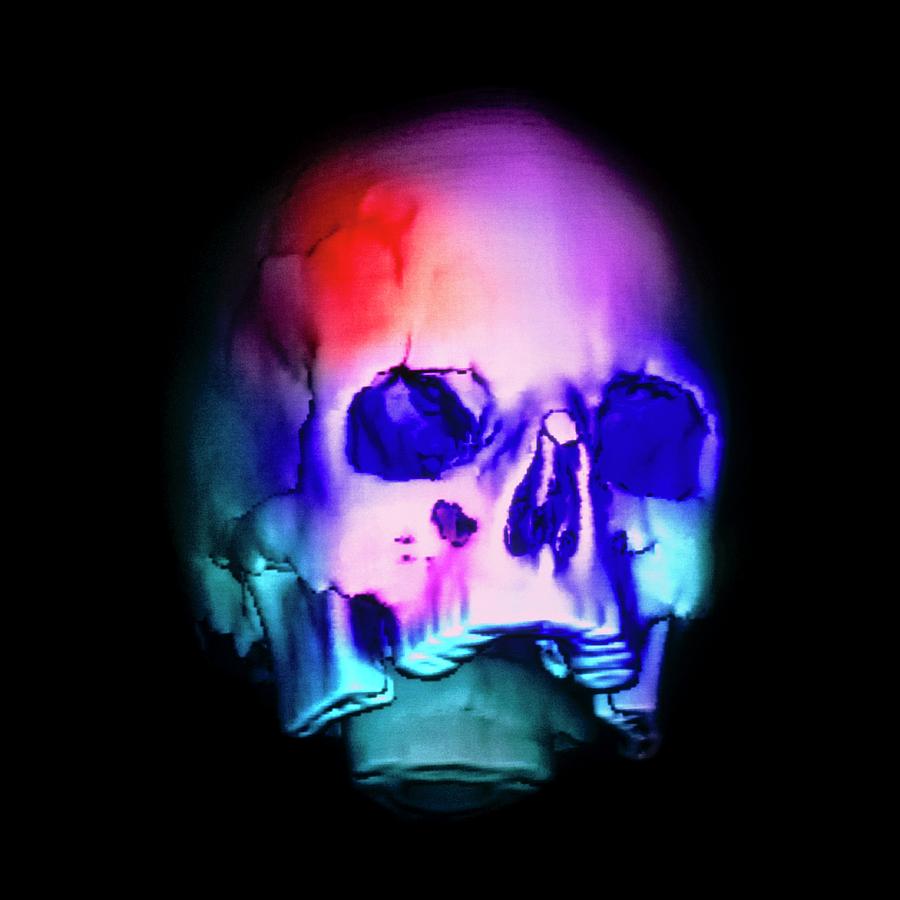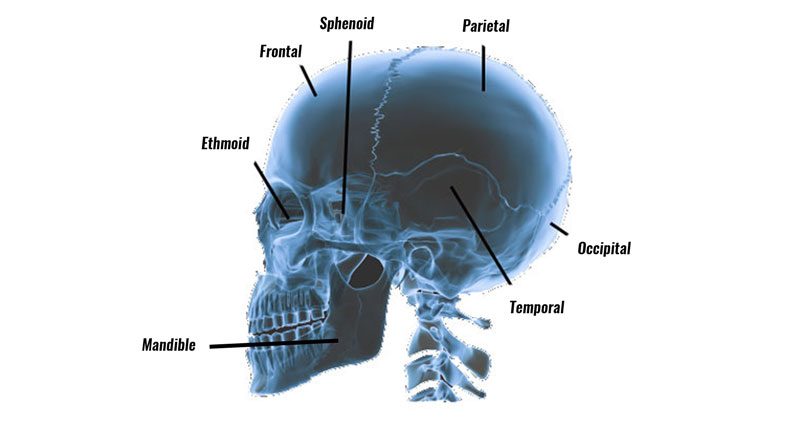

Le Fort III: The fracture extends across the bridge of the nose and the bones surrounding the eyes. Le Fort II: The fracture extends from the lower part of one cheek, below the eye, across the bridge of the nose, and to the lower part of the other cheek. Le Fort I: The fracture extends above the upper jaw (maxilla). There are three main types of Le Fort fractures, but there may be individual variations. 
One characteristic of all types of Le Fort fractures is the fracture of the pterygoid processes, part of the sphenoid bone.
Mid-face (Le Fort fractures): Blunt force trauma tends to cause fractures along three lines of weakness in the mid-face. Direct orbital floor fracture: This is a rim fracture that extends into the lower socket. The eye muscles and other structures can become entrapped in the break and prevent the eyeball from moving normally. #SKULL FRACTURE CRACK#
Blowout fractures: The orbital rim remains intact in this case, but a crack forms in the thin bone at the lower part of the eye socket.Many other injuries may accompany an orbital rim fracture, such as damage to the optic nerve. It requires a lot of force to break the bone. Orbital rim fracture: The outer rim is the thickest part of the eye socket.Orbital fractures (eye socket): There are three main types of orbital fractures.Fractures to the cheekbone(s) might also involve breaks in other facial bones nearby. Zygomaticomaxillary fractures (broken cheekbone/upper jaw): The zygomas (cheekbones) are attached at several points to the upper jaw (maxilla) and bones of the skull.Associated problems may include leakage of the cerebrospinal fluid, eye injuries and damage to the sinus ducts.

Substantial force is required to fracture the frontal bone, so often other injuries to the face and skull or neurological trauma may be present. An injury may cause the bone to be indented (pushed inward). That’s where the bone is the thinnest and weakest. The fracture is mostly likely to occur in the middle of the forehead. A high-impact injury to the head can cause a fracture of the frontal bone and floor of the sinuses.
Frontal bone (forehead) fractures: The frontal bone is the main bone in the forehead area. Nosebleeds and bruising around the nose are common symptoms of a nasal fracture. Swelling in the area might make it more difficult to assess how much damage has occurred. Usually, the nose looks deformed or feels sore to the touch after a fracture. It takes less force to break the nasal bones than other facial bones because they are thin and prominent. The nasal bone is made up of two thin bones. Nasal bones (broken nose): Nasal bone fractures are the most common type of facial fracture. There are several main types of facial fractures. Also, fractures of the jawbones may cause breathing problems or make it difficult to chew, speak, or swallow. Fractures of the nose may make it difficult for the injured person to breathe or smell. Fractures to the orbit (eye socket) may result in problems with vision. Fractures may result in damage to cranial nerves, depending on the particular type and location of the fracture. The face is close to the brain and central nervous system (CNS). The muscles and nerves are located near to the facial bones. Located near to the bones in your face are the nerves and muscles that are responsible for sensations, expressions and eye movements. However, complex fractures may cause irreversible damage and can even be life-threatening. If you suffer from a facial injury, you should seek immediate medical attention. Fractures may be unilateral (occurring on one side of the face) or bilateral (occurring on both sides of the face). Multiple fractures are more likely to occur during a motor vehicle accident or other high-impact accident. You might only have one fracture, or you might have several broken bones. Fractures to other facial bones can also occur. Nasal fractures (broken nose) are the most common. Muscles required for chewing, swallowing and talking are attached to these bones. 
There are many other bones that are found deeper within the facial structure. A facial fracture is a broken bone in the face.








 0 kommentar(er)
0 kommentar(er)
